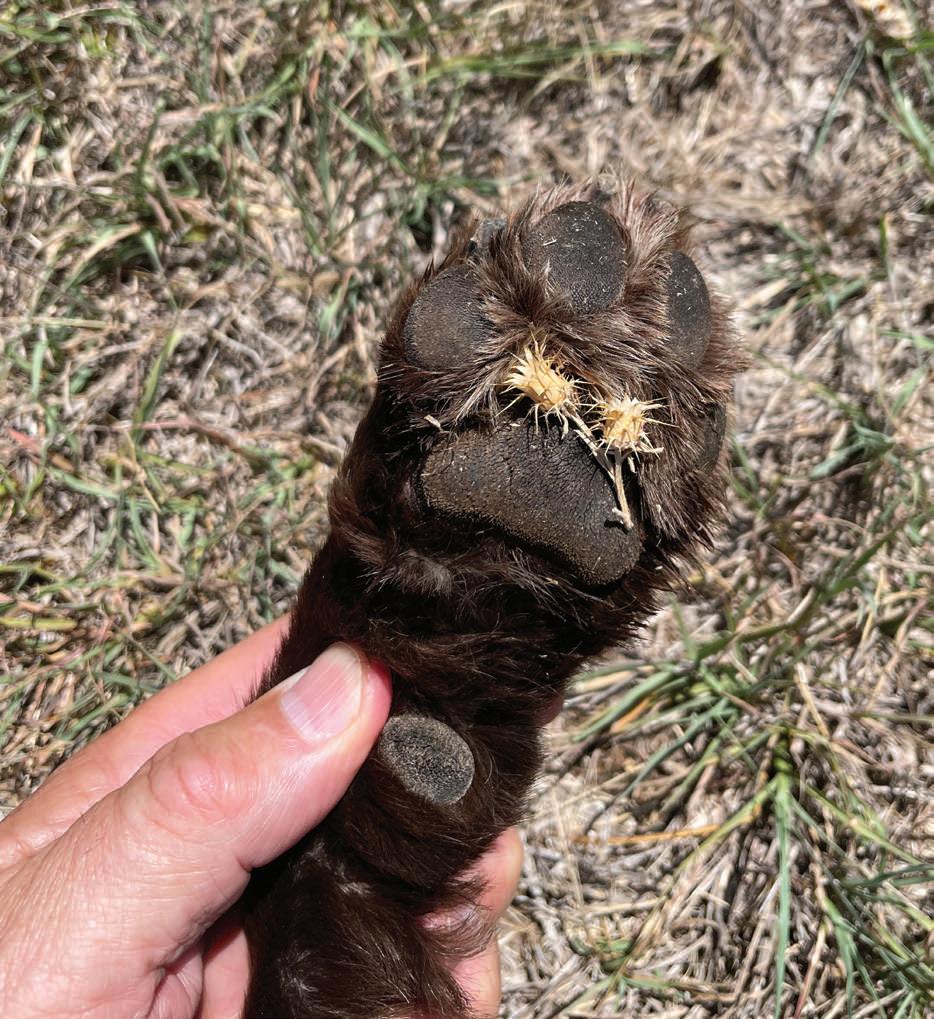
2 minute read
Habitat
GRASS BURS CAN SPOIL THE HUNT
By Tim Soderquist
Habitat Land Services
For all of us who love hunting and the outdoors, the Field Sandbur “Grass bur” is known by several names but we all can agree they translate to pain. Although I am not a botanist, I must agree that the Greeks named it best with the species name Cenchrus echinatus which means armed with spines (spikelets). Sometimes making it challenging and painful to hunt, it holds especially true for our trusty retrievers and pointers working through a thick patch of “pain” grass burs! Texas has ten diverse ecoregions and grass burs are more prevalent in certain regions vs. others. According to many Feed Store marquis throughout central and south Texas, advertising herbicides to help fight the pesky “spikelet” weeds, there must be a regional connection with the current drought conditions along with sandier soil types. For who are challenged with their favorite hunting fields overwhelmed with grass burs, there is hope. The following methods are proven ways to manage these unwanted weeds.
Food Plots
Disking and planting of your favorite sunflowers, sesame, milo, or millets will help minimize the challenges with grass burs as density and shade-out of your favorite dove food plants should overwhelm the growth of weeds.
Growing Good Grasses
This is the best defense for fighting grass burs. A dense field of grass will choke out the annoying weeds.
Mechanical Habitat Management
Timely shredding of fields allows grasses to overtake the grass burs. Depending on your density of grass, do your best not to scalp the field giving your weeds the advantage of overtaking your healthy grasses.
Pre-Emergent and PostEmergent Herbicides
The pre-emergent herbicide application is the most effective means of controlling grass burs and needs to be done before weed seeds germinate. A good rule of thumb is to apply when the soil temperature has reached 52 degrees. The guys and gals at those feedstores in Central Texas will recommend applying around March 15, while in South Texas they shoot for March 1, and April 1 in North Texas (depending on that year’s weather). According to Associate Professor Dr. James A. McAfee of Texas A&M University, a variety of brands are available for grass bur control including Amaze Grass & Weed Preventor, Surflan AS, Weed & Grass Preventor, and Weed Stopper. For fields with light infestation, two applications about six weeks apart should control your field. But for densely covered fields of grass burs apply every six weeks through September. Also, do your best to apply just before a good rain or irrigate the field with a good soaking to get the best bang from your pre-emergent products. Post-emergent herbicides should be applied once the air temperature reaches 75 degrees. A liquid herbicide vs. granular is going to be more effective once the grass where burs appear. Although there is nothing we can do about drought conditions across Texas, We won’t allow the invasion of the painful grass burs to stop us and our dogs from having great times in the field this season. Take control of your wildlife habitat and maximize your enjoyment of time spent with family and friends outdoors!







